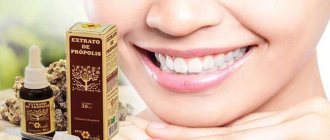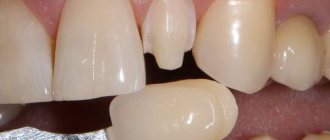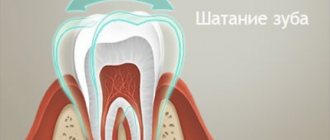Tincture of calamus and propolis for teeth and gums was proposed by Academician B.V. Bolotov. In his writings, he noted its effectiveness and ability to cope with many oral diseases even in advanced stages.
Before starting to use recipes and products containing beekeeping products, be sure to consult a doctor who, based on tests and examination, will determine the advisability of using such products and prescribe a course and dosage.
Information about calamus
Common calamus (from Latin Ácorus cálamus) is also called marsh or reed calamus. Belongs to the perennial calamus family. The plant can be found near coastal waters and swamps. Grows on a massive scale in Southeast Asia, North America, Russia, and Europe. In our country, calamus can most often be found in Southern Siberia, the Far East and the European part.
According to scientists, the homeland of calamus is China and India. But since ancient times, thanks to man, the plant was known throughout Asia. The spread of this species was determined by the fact that it grows on the banks of reservoirs, the water of which is suitable for drinking. Therefore, nomadic tribes, traveling, scattered rhizomes by overcoming water and swampy barriers.
The plant came to Russia in the 12th-13th centuries. It was brought by Tatar tribes. They were sure that calamus roots purify water in reservoirs, which becomes suitable for consumption. In order to drink water from an unknown river, the Tatars always carried a calamus root with them and added it to their drink. Calamus has a subtle spicy aroma. It was used as a replacement for bay leaf, cinnamon, and ginger root. The root is used in medicine.
Tooth cyst - what is it?
A dental cyst is a cavity formation. What does a dental cyst look like: it is a sac with liquid or a pasty substance. The walls of the cyst are formed by a layer of epithelial tissue. Inside the cyst there is pus, dead cells and bacteria.
The roots of the teeth of the upper jaw have a more porous structure, so the inflammatory process of cysts in the apex of the roots in this case proceeds faster and more intensely.
A cyst on the root of a tooth can be of different sizes - from 5 mm to several cm. The cause of the formation of a “purulent sac” is always an infectious process, and it, in turn, can be provoked by a number of factors.
Chemical characteristics
The rich composition of this perennial plant allows you to cure diseases of teeth and gums. The ancient Greeks and Romans already knew that calamus helps with toothache and bleeding gums. The rhizome contains:
- complex essential aromatic oils;
- tannins;
- phytoncides;
- starch;
- organic acids;
- tannins;
- resins;
- ascorbic acid;
- palmitic acid;
- iodine;
- aromatic azarinaldehyde;
- macro and micro elements;
- vitamins.
Calamus oil appears as a yellow or light brown liquid. The oil tastes spicy-bitter and smells like a lava leaf. Rhizomes have wound-healing, soothing, and disinfectant effects. In addition, the root can produce an analgesic effect.
About the treatment of cysts and granulomas
In the dental life of patients, situations sometimes arise when the question arises: should we save the tooth or remove it? As a rule, such teeth have already been treated once in the distant Soviet or not very distant Russian past. And on such teeth, as patients say, a “cyst” has grown. Let's figure out what it is and where it comes from.
The word “cyst” hides a chronic inflammatory process. The main reason for the appearance of this inflammatory process is poorly treated or not treated on time root canals.
These pictures show a tooth that was treated poorly. The tooth has no pulp, white stripes are visible - these are traces of filling material, there is an empty, unpassed part of the canal (marked with a blue dotted line) and that very “cyst” - chronic inflammation, granuloma (the area is highlighted in red).
And this is another option: the tooth “dies” asymptomatically or with pain of varying intensity; in the absence of timely diagnosis and treatment, pulpitis turns into periodontitis and chronic inflammation develops.
In both cases, the neurovascular bundle (pulp) is no longer present in the tooth canals, but the space of this canal is not filled with anything else or is filled poorly, with pores and voids and not to its full length. But nature does not tolerate emptiness. If, instead of the nerve, the canals are not filled with filling material efficiently, then this space will be filled with bacteria, which causes this inflammation. And their living environment is the most luxurious: the remains of pulp, blood, lymph, warmth and humidity - all inclusive. And naturally there are more and more bacteria. Sometimes such teeth can begin to bother, ache and ache with calls for help, but if the immune system copes, the inflammation slowly grows for many years, unnoticed by anyone.
It seems like why treat a tooth if it doesn’t hurt? But inflammation has not gone away and bacteria have their completely unhelpful effect on the body. A fistula tract (“bump” on the gum) may form, through which purulent discharge will flow out from time to time. I don’t think there’s any need to explain how unhelpful pus is. In addition, there are different sinuses on the upper jaw, in particular the maxillary sinus, and if a tooth is located next to this sinus, the products of bacterial life get there too, causing odontogenic (this means from the teeth) sinusitis. And for patients, for example, with infective endocarditis (inflammation of the membranes of the heart), sanitizing the oral cavity is a very important point, since the cause of development is bacteria that enter the bloodstream and settle on the valves and membranes; these bacteria are very often bacteria from chronic lesions oral cavity.
To summarize, the main meaning of all of the above is that if your teeth don’t hurt, this does not mean that nothing needs to be treated. A dental examination every 5-6 months is prescribed in order to identify problems in the early stages, but this is a topic of prevention.
Let's return to the treatment of granulomas and consider a specific example:
Its background is as follows: tooth 3.6 was treated for pulpitis about five years ago and, despite the large focus of inflammation, did not bother the patient in any way, it was discovered on a panoramic orthopantomogram (a photograph of all teeth). There was no talk of removal; the patient never wanted to part with her tooth.
The white stripes in the picture are filling material; they are thin and intermittent and do not reach the top of the root. This means that the root canal system was not sufficiently prepared and expanded to remove all organic debris from it. Blue stripes are emptiness, with a warehouse of all sorts of goodies for bacteria.
The granuloma is outlined in red.
We have already talked about the general principles of root canal treatment, so we will consider the course of treatment.
Firstly, our task is to mechanically process the root canals, go through those areas that were not processed (blue stripes on the x-ray above) and find missed empty canals, if any.
Secondly, it is necessary to expand the root canals so that the solutions with which we wash the canals have their effect throughout the canal, dissolving the nutrient organic environment of bacteria.
Thirdly, it is necessary to ensure that all old infected material is removed from the canals as much as possible.
In this picture, the white stripes are a control picture with instruments after mechanical and medicinal treatment. The canals are passed, processed and expanded to their entire length.
At the next visit, the tooth is obturated (sealed) permanently. The treatment took two visits of 1.5 hours and 1 hour. The patient came for a follow-up examination three months later.
And here is the picture and we see a significant improvement in the situation, the “cyst” has almost healed, only minor changes remain, which, no doubt, will disappear. The patient is scheduled for a follow-up examination in another 3 months, where we expect to see complete recovery of the tooth. As we wrote earlier in a note about the general principles of root canal treatment, the treatment will continue and the tooth will be hermetically restored with an inlay or crown.
But there is an important nuance - treatment of such teeth is never 100% successful. The absolutely predictable result is only removal. The success rate of root canal retreatment over a five-year period is about 70-80%, and implantation success is 95-97%. Therefore, it is always necessary to evaluate all the risks in attempts to save teeth. To treat or not to treat is a decision made only by the patient. Just remember: the best implant is your tooth)
It is very important to note that modern standards of treatment for teeth with chronic inflammatory processes imply a minimum number of visits. But there are outdated methods of treatment, which, unfortunately, are still used to this day. The tooth canals begin to be “pickled” with various medicines, healing pastes, iodine and other various healing substances are put there. And then all this is changed according to a scheme, and each doctor has his own scheme - after 7 months, after 6 months, after 3 months, as you like. And the patient must walk like this for six months to a year, and the doctor observes in the pictures how the cyst “goes away.” And there are also those who like to “treat cysts”, releasing the same wonderful drugs directly into the bone, into the inflammatory focus, just to be sure.
This is absolutely pointless and this approach, at a minimum, forces you to spend more money and more time, and at maximum, it can cause harm. The tooth is closed with a temporary filling, which over time becomes leaky, collects plaque and lets saliva along with this plaque into the canals and can cause re-infection of the canals, also the temporary filling does not withstand heavy chewing loads and the walls of the tooth can simply break, which will lead to to removal, well, drugs released in large quantities into the bone add unnecessary work to your body’s immune system. If you were offered something similar, you can safely leave and you won’t go wrong.
Of course, this does not mean that the canals are never temporarily filled. There is a quote from well-known dental gurus Rinaldo Mattar and Affonso Bernardes: “You can convince anyone to do endodontic treatment in one visit, it’s harder to convince germs to die in two hours.” Sometimes temporary medicinal investment in the canals is necessary and justified, but they mainly use aqueous calcium preparations, without iodine and all sorts of impurities, left in the canals for a short time (2-3 weeks), and then they are filled permanently, without waiting for the “cyst to go away.” ” and without changing this calcium throughout the year. And especially without bringing it to the source of inflammation in the bone.
They use outdated methods due to a lack of understanding of the inflammation process. Granuloma is not a cause, it is an EFFECT. And the REASON is bacteria that live in the canals and affect the patient’s body with the products of their vital activity, and the body tries to “fence off” these bacteria and forms a response - a granuloma. This focus of inflammation is the battlefield of your immunity with the bacteria of the canal, and therefore, it is pointless to remove kilograms of miracle remedies there. It is necessary to eliminate the cause, and not influence the effect.
The doctor can eliminate the cause only with the help of a modern protocol. And all this in a minimum number of visits.
Further restoration of the tooth is very important in treatment. After all, it is necessary not only to eliminate the inflammation, but also to chew with this tooth in the future. The fact is that to restore a tooth with an inlay or a crown, you need tooth tissue; there may be few of them, just a few millimeters above the gum, but they must be there. This allows you to do high-quality and airtight work for many years. And if it is impossible to restore chewing function, the tooth must be removed.
As an example, a decayed tooth. The preserved wall of the tooth is marked in red, and it seems not even a few millimeters, but blue marks the area where the hard tissues have already been destroyed below the gum level; it is impossible to restore such a tooth qualitatively and for a long time.
And one last addition: treatment of such teeth is NEVER 100% successful and there is no 100% guarantee. The absolutely predictable result is only removal. The success rate of root canal retreatment over a five-year period is about 70-80%, and implantation success is 95-97%. Therefore, it is always necessary to evaluate all the risks in attempts to save teeth. To treat or not to treat is a decision made only by the patient. There is another point here: the best implant is your own tooth.
Therapeutic effect
Calamus root is an excellent antiseptic that has a positive effect on teeth and gums, as well as on the oral cavity as a whole. The range of positive effects of calamus:
- helps eliminate harmful microorganisms, has an astringent effect, helps stop the inflammatory process;
- for stomatitis, the crushed root is sprinkled on wounds and ulcers in the mouth;
- eliminates bad breath;
- Calamus root tincture helps with periodontal disease, strengthens gums and tooth enamel.
Periodontal disease is a serious disease of the oral cavity in which dental tissues are damaged with accompanying symptoms. Painful inflammation appears on the gums, and bleeding becomes more frequent. If measures are not taken, then over time the periodontal tissue will begin to deteriorate and tooth pain will appear. Cavities will begin to appear near the gums, which can cause the loss of healthy teeth.
The properties of calamus help restore gums, alleviate symptoms, and eliminate pain. One of the respected experts in traditional medicine, Bolotov, recommended rinsing your mouth with a tincture of calamus root and propolis.
Useful properties of the composition for dental treatment
The tincture is effective due to the components it contains. Calamus is an evergreen herbaceous plant with pronounced disinfectant properties. The roots are used as medicinal raw materials. They contain vitamins, microelements, fatty acids, antioxidants, tannins, and essential oils.
Even in ancient times, crushed rhizomes were used to treat purulent wounds and ulcers on the body. Today, calamus is deservedly considered one of the best plants for the prevention and treatment of oral diseases, since:
- has an astringent, disinfecting, anti-inflammatory effect;
- effectively heals ulcers and wounds that appear due to stomatitis;
- relieves bad breath, strengthens teeth during periodontitis;
- eliminates bleeding gums.
The property of calamus is known to be “sealing” the tooth. Regular use of tincture or powder stops the carious process.
Propolis is a traditional beekeeping product. It is rich in flavonoids, resins, tannins, aromatic acids, minerals, enzymes, vitamins A, E, C.
Propolis is actively used to treat wounds, ulcers, and prevent many skin diseases. Bee products are good for teeth because:
- soothes, relieves inflammation and pain;
- reduces sensitivity;
- accelerates the healing of damaged gums;
- destroys germs and prevents the spread of infection;
- removes pus.
Recipes
First, it’s worth considering the most effective folk remedies that use calamus root for damaged gums and teeth. If you comprehensively and regularly make calamus tinctures and decoctions and apply them, you will soon notice a positive result.
Decoction for rinsing from calamus
This folk medicine is effective for different degrees of periodontal disease. For the decoction you will need one calamus root, which must be crushed, and 1 glass of boiled water. Method of preparation and use:
- Boil water and in the meantime chop the rhizome. Cool the boiling water slightly and pour in the calamus. Bring the broth to a boil and let it brew for 15 minutes.
- Strain the broth and cool. Rinse your mouth with it at least four times a day. Recommended treatment time is 30 days.
Calamus alcohol tincture
For such a healing remedy you will need raw calamus rhizome, pure alcohol or vodka. Cooking option:
- Grind the dry roots in a blender. Next, pour into a bottle or glass container and add alcohol in a ratio of 1:5.
- Infuse the medicine in a dark cabinet for 7 days.
- It is recommended to use the product two to four times a week for a month.
- For the procedure, you will need gauze, which must be soaked in the tincture. You need to apply it to the inflamed area for 10-15 minutes.
Medicine for teeth
To treat damaged dental tissue, you will need crushed root and water. Step-by-step method for preparing the infusion:
- Two teaspoons of dried root should be poured into a glass of hot water.
- Cover the infusion with a saucer and place in a dark place for 12 hours.
- Strain the medicine and rinse your mouth with it 3 times in the morning, afternoon and evening for a month.
Calamus root tincture with propolis
An effective folk method - propolis and calamus root for diseased teeth helps eliminate pain and signs of periodontal disease. To begin with, you should prepare 35 grams of roots, 1 liter of vodka, 20 grams of propolis. Recipe:
- First you need to make a herbal infusion from 500 ml of vodka and calamus, which you need to combine in a saucepan and cover with a lid. Let it brew for 7 days.
- Pour propolis into 500 ml of vodka and also place in a dark place for a week. For the tincture you need crushed propolis.
- After time, combine both healing liquids and rinse your mouth once a day for two months.
According to some medical sources, it is known that such a tincture helps not only prevent caries, but also restore already destroyed dental tissue. If you are unable to find propolis, you can purchase a ready-made tincture at the pharmacy.
Editor's comment
I would like to say the following on my own behalf. The tincture is quite hot, you need to be patient a little at the beginning of rinsing.
Instead of preparing propolis tincture, I use a ready-made one from a pharmacy (30-50 rubles per bottle).
I use two 25 ml bottles per 0.5 liter of tincture of calamus rhizomes. I first strain the tincture from the roots and mix everything together. I think it's not critical. Although, it is probably preferable to prepare propolis tincture yourself.
As for the growth of new teeth, of course, it’s hard to believe, but to strengthen the health of teeth, the teeth themselves can be very suitable.
I recommend using tinctures when a tooth hurts and for prevention.
If you make powder from eggshells, first remove the thin film from them. Otherwise, it will go rotten and will smell unpleasant for some time. By the way, I read that it is recommended to use the powder with a small amount of lemon juice for better absorption.
Recommendations for the use of tinctures
After making a herbal infusion with alcohol, the question arises - how to properly use the drug in order to get the maximum benefit from it. For convenience, it is customary to mix alcohol tincture with a small amount of water. In this case, the medicine will not burn the mucous membrane so much. Rinsing your mouth should be done for two minutes.
Afterwards, the mixture needs to be spat out, as it contains an accumulation of all microbes and harmful bacteria. If you experience pain in your teeth, you can rinse more than once a day. It is also recommended to carry out the procedure before bedtime. Due to the strength of alcohol, calamus root extract penetrates deeply and fills small cracks.
Why is a dental cyst dangerous?
The formation of a cyst itself does not cause serious complications. However, when wondering why cysts on the roots of teeth are dangerous, you should take into account that these formations are prone to growth, and the lack of timely treatment can cause a number of complications:
- flux or periostitis - inflammation of the periosteum, which is fraught with serious consequences for overall health;
- periodontitis - it can be both the cause of a cyst and its consequence; the spread of inflammation to the bone tissue leads to tooth loss and changes in the structure of the jaw bone;
- phlegmon - it is localized in the tissues of the neck and face, can lead to general infection of the body and poses a danger to health and life;
- osteomyelitis of the jaw;
- sinusitis - the answer to the question of why a tooth cyst near the nose is dangerous, this disease can be not only the cause, but also a consequence of the formation;
- tumor malignancy;
- blood poisoning as a result of the formation of large amounts of pus.
Such an impressive list of serious consequences obliges you to be attentive to your oral health and, when the first alarming signs appear, be sure to contact a dentist.
Contraindications and precautions
Medicines prepared on the basis of calamus root are not recommended for people diagnosed with hypotension, stomach ulcers, or in the presence of constant bleeding. Also, pregnant and lactating women should not use calamus root tincture. The leaves and roots of calamus have increased biological activity, and before use, experts advise consulting with a therapist.
Components of the tincture, such as calamus and propolis, can be allergens, especially bee products. You can test the tincture on the crook of your elbow. Apply and wait 15 minutes, if nothing happens, then you can safely use the medicine.









